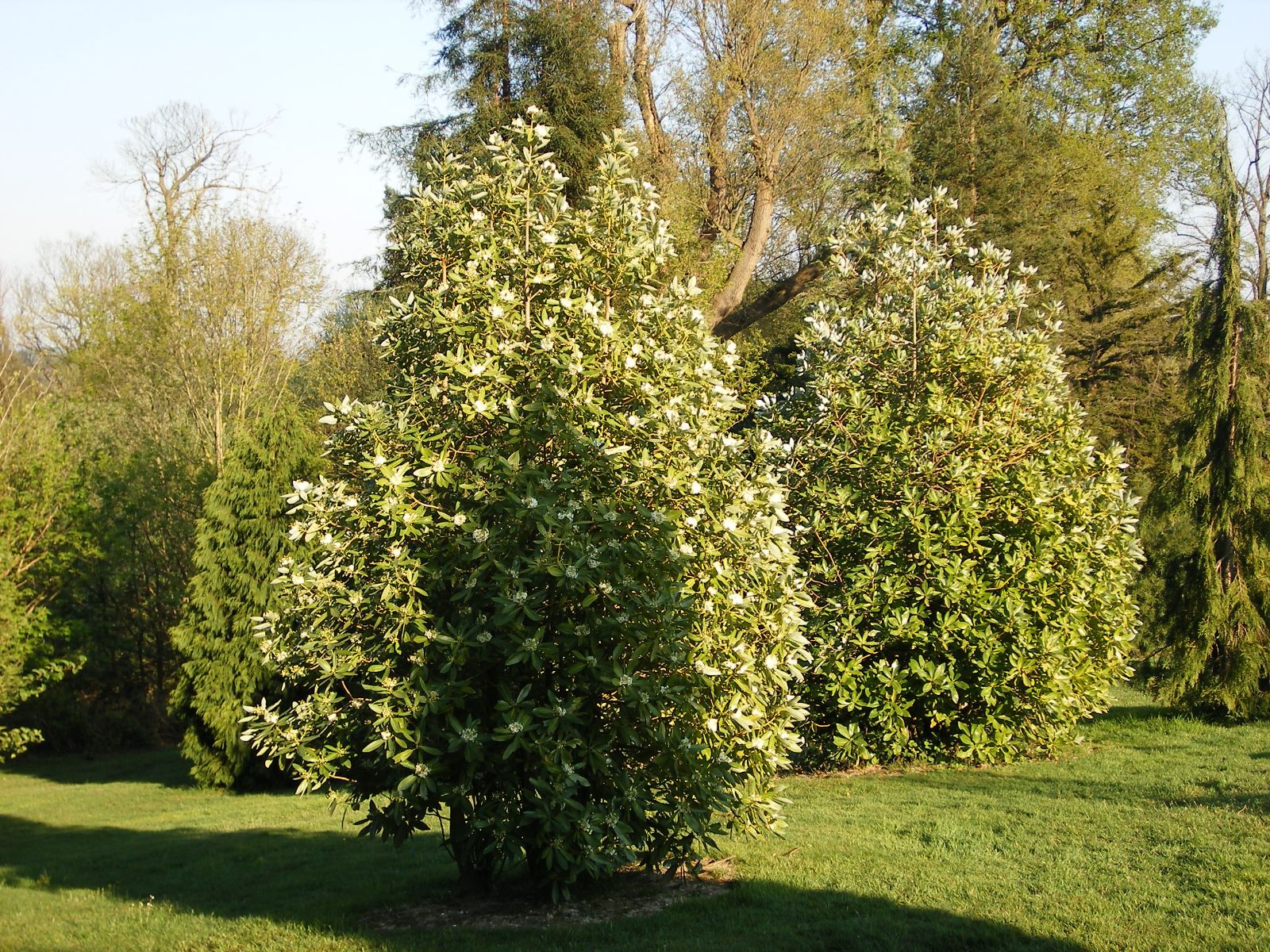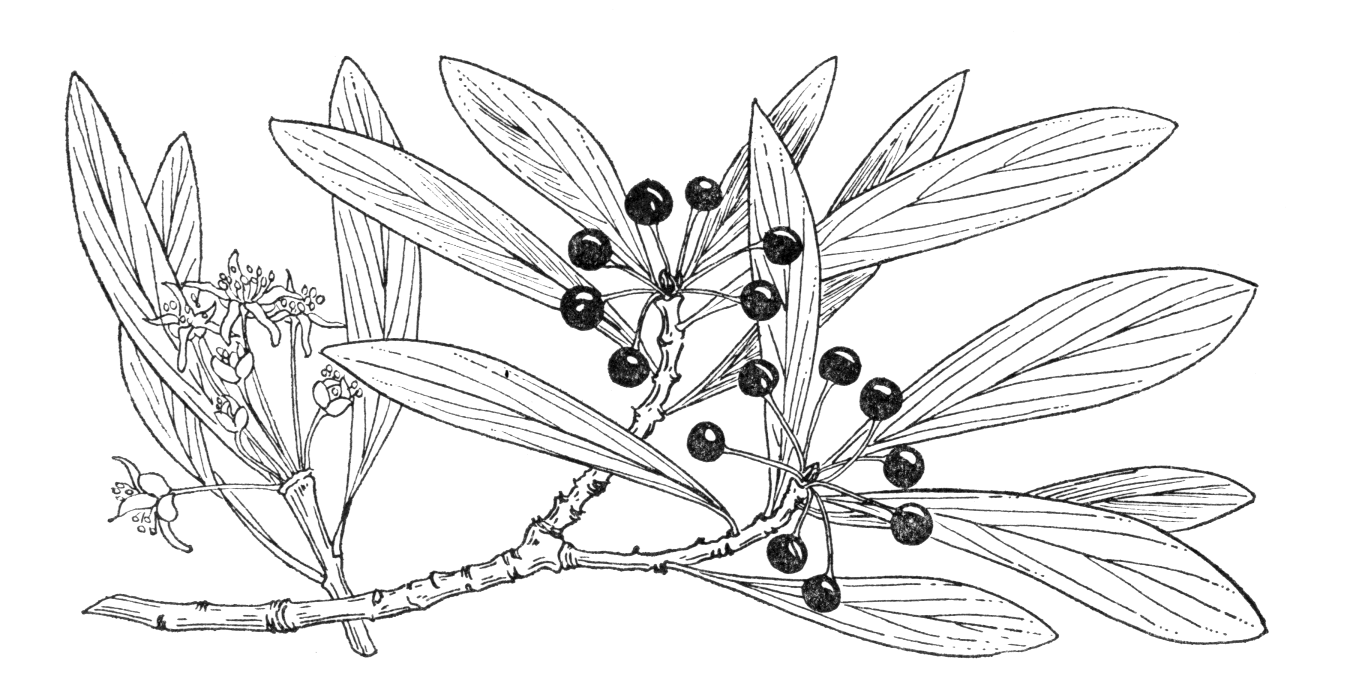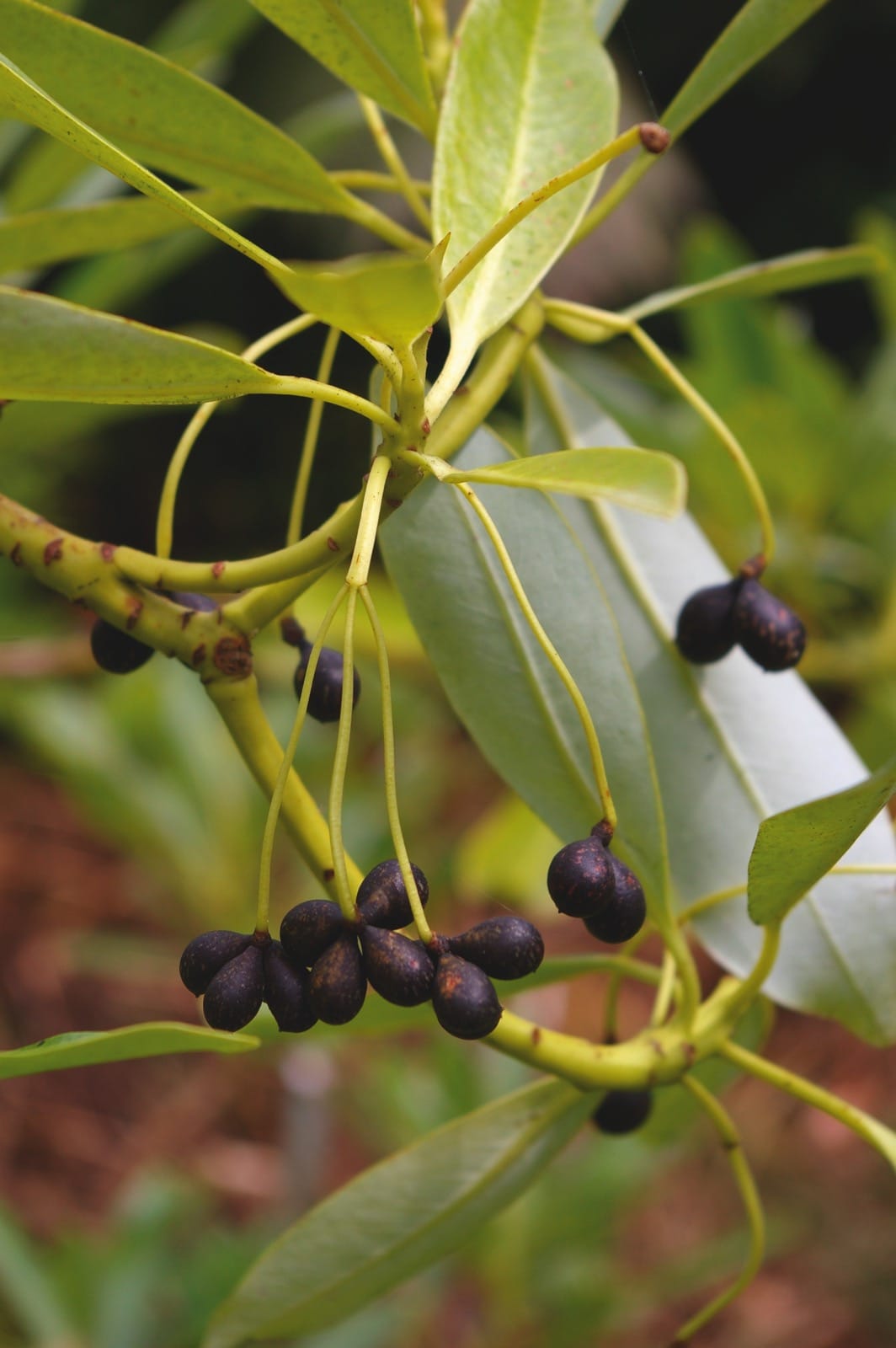Drimys
Credits
Article from Bean's Trees and Shrubs Hardy in the British Isles
Article from New Trees by John Grimshaw & Ross Bayton
Recommended citation
'Drimys' from the website Trees and Shrubs Online (treesandshrubsonline.
Family
- Winteraceae
For many years, the genus Drimys was thought to include species in both the Old and the New Worlds. The decision to place the Old World taxa into a separate genus Tasmannia (as championed by Smith 1969) was controversial, and opposed by some authors (Vink 1970, 1993). However, modern DNA-based techniques have shown that Drimys and Tasmannia together do not form a monophyletic group (Doust & Drinnan 2004), and are therefore best considered as separate genera.
Drimys (s.s.) thus comprises four species: D. granadensis, ranging from Mexico to northwest South America; D. brasiliensis Miers in southeast Brazil and on Mount Roraima; D. confertifolia Phil. on the Juan Fernandez Islands; and D. winteri in Chile and Argentina. They are trees or shrubs, with evergreen leaves that are alternate, often irregularly crowded at or near the stem apex, leathery, and fragrant when crushed, with distinctive stomata on the lower surface. Inflorescences are axillary or terminal, umbellate or single-flowered. The flowers are hermaphrodite, pedicellate, with bracts that are early caducous; two (to three) sepals, papery to membranous, fused together to form a calyptra; 4–17(–25) petals, white, their size, shape and number varying considerably across the range; and 15–50(–65) stamens. The fruit is a slightly falcate berry, which may be dark purple or reddish black.
In the reduced genus Drimys, only D. winteri is well known in cultivation. This has proven its horticultural worth over the past two centuries, since its introduction in 1827, as both a foliage and a flowering plant. Its variation is discussed at length by Bean (1981a) and Hogan (2008).
Bean’s Trees and Shrubs
Drimys
A genus of about twenty species (fewer in some interpretations), natives of Malaysia, E. Australia, New Caledonia and Central and S. America. The family Winteraceae differs from Magnoliaceae (in which Drimys was once placed) in the leaves without stipules; small, rarely solitary flowers; carpels borne in a single whorl (not arranged spirally on a conical axis as in Magnoliaceae). The family is also represented in gardens by the New Zealand species Pseudowintera colorata and P. axillaris, described in Vol. III.



